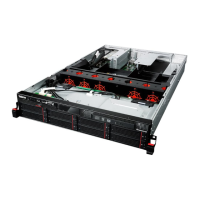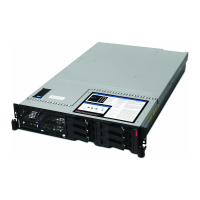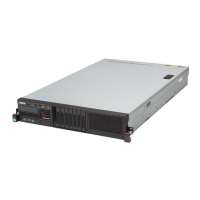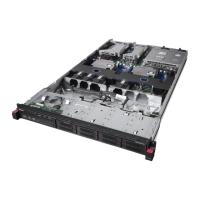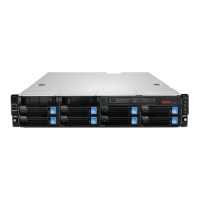• RedHat Enterprise Linux 6.6 (x64)
Note: If the SATA configuration for your server is set to OB SATA RAID, connect the USB storage device to
your server before the operating system installation. Then, install RAID drivers after operating system
installation.
To install the Red Hat Enterprise Linux 6.6 operating system, do the following:
1. Insert the operating system installation disc into the optical drive that you have set as the first startup
device. Then, start the server from the optical drive.
2. Depending on the SATA configuration on your server, do one of the following:
• If the SATA configuration is set to IDE, AHCI, or Add on RAID, go to step 3.
• If the SATA configuration is set to OB SATA RAID, do the following to upgrade your driver:
a. When “RHEL installation welcome screen” is displayed, press Tab.
b. Enter a space and type linux dd blacklist=ahci nodmraid, and then press Enter.
c. In the “Do you have a driver disk?” window, select Yes.
d. In the Driver Disk Source window, go to the folder where the driver is stored and click OK.
e. When the Driver Disk Source window is displayed again, click OK.
f. In the Select driver disk image window, select your desired driver and then click OK.
g. In the “Do you wish to load any more driver disks” window, select No.
3. In the Disc Found window, select Skip, and then press Enter.
Note: If the operating system is installed on the SAN card through iSCSI, the Networking Device
window is displayed. Select the desired Ethernet device, and then click OK. In the Configure TCP/IP
window, select the option according to the network environment. The following steps are based on the
scenario that Enable lpv4 support->Dynamic IP configuration (DHCP) is selected.
4. In the RED HAT window, click Next.
5. Select the language that you want to use during the installation process and click Next.
6. Select the appropriate keyboard layout for the system and click Next.
7. Select the type of devices for the installation and then click Next. The following steps are based on the
scenario that Basic Storage Devices is selected in this step.
Notes:
• If the Storage Device Warning window is displayed, select Yes, discard any data. If a message
prompts that at least one operating system installation has been detected on your system, configure
the setting as you need. Then, click Next. The following steps are based on the scenario that you
select Fresh installation.
• If the operating system is installed on a SAN through an ISCSI card, select Specialized Storage
Devices and click Next. Then, select SAN in the Other SAN Devices area and click Next.
• If the operating system is installed on a SAN through an FCOE card, select Specialized Storage
Devices and click Next. Then, select SAN in the Basic Devices area and click Next.
8. Type a name for your server. Then, click Next.
9. Specify your time zone by selecting the nearest city in your time zone. Then, click Next.
10. Personalize the server by typing the root password for the root user account. Then, click Next.
Note: If a message prompts you that the password is weak, click Use Anyway.
11. By default, a partition is already selected for you to install the operating system. If you want to create a
partition manually, select the option as you need and then click Next.
Chapter 3. Installing an operating system in legacy mode 79
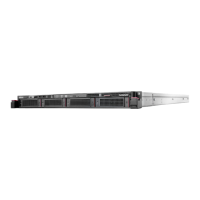
